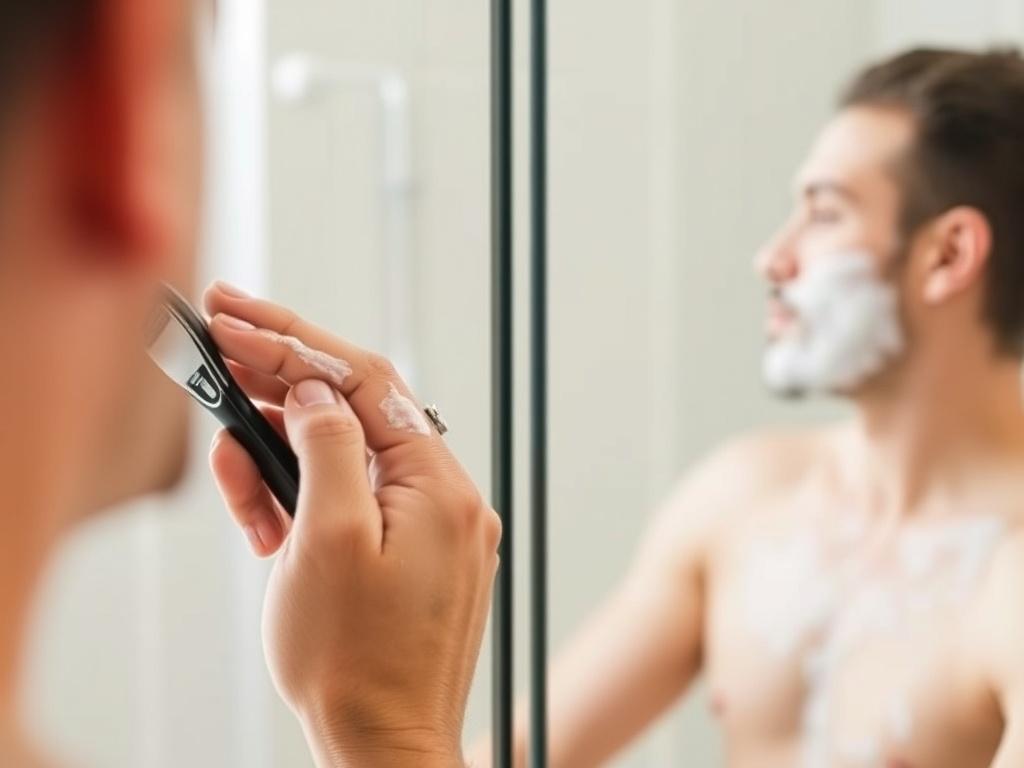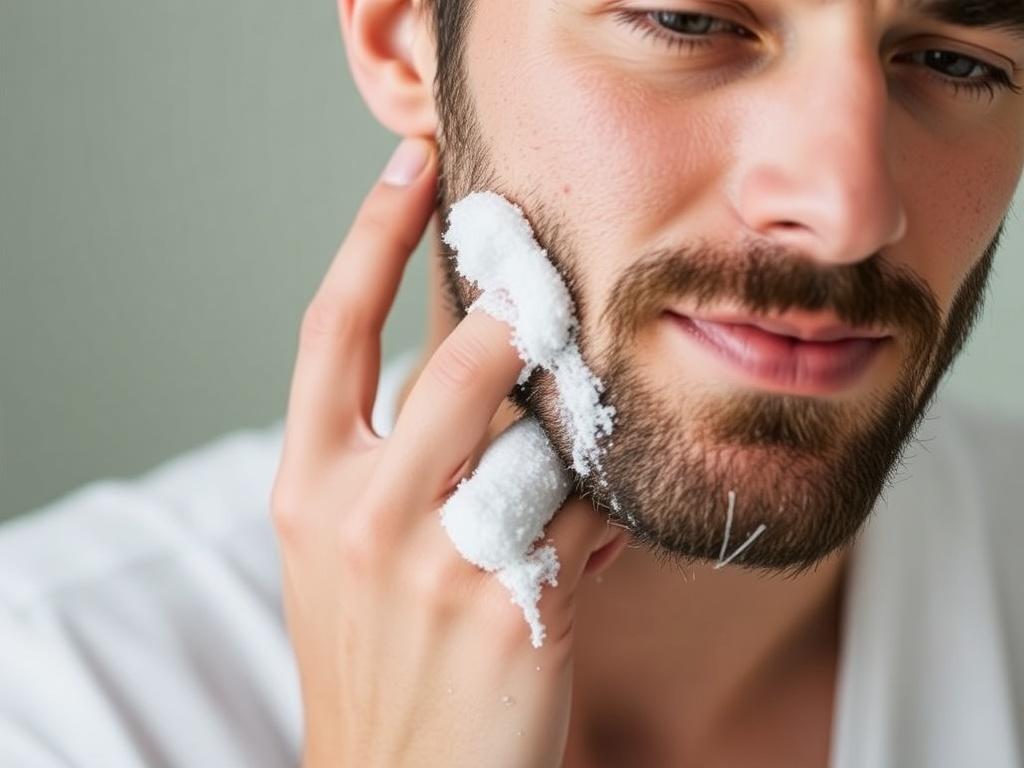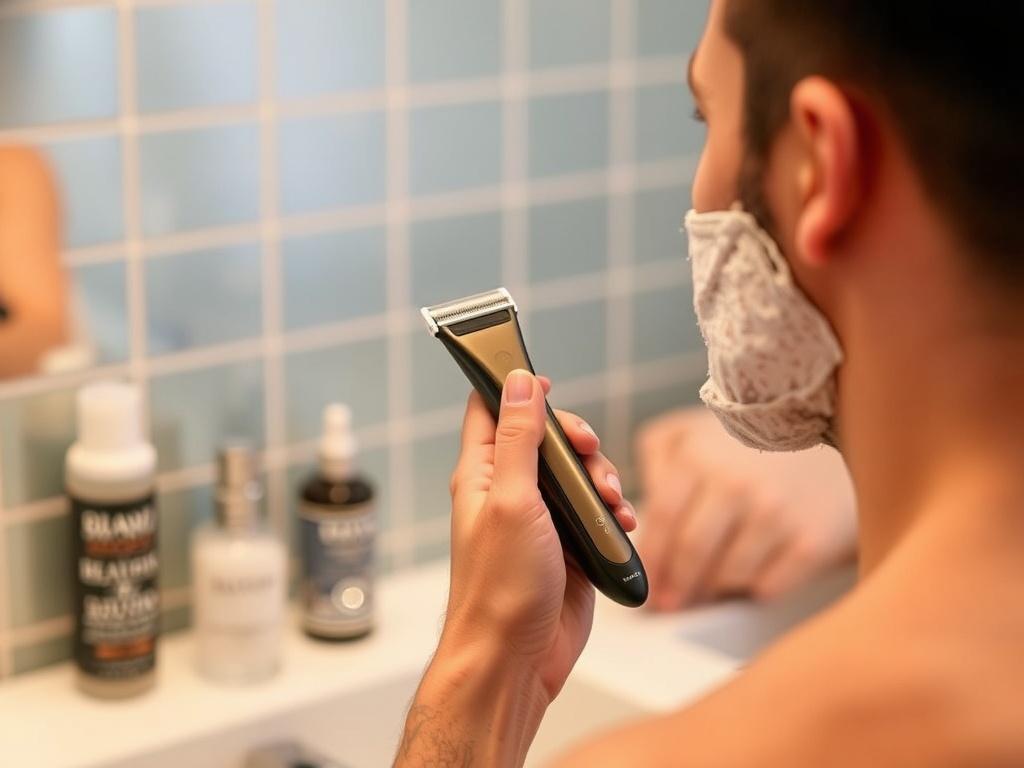Содержание статьи
- 1 Understanding Why Shaving Irritates Your Skin
- 2 Preparing Your Skin for Shaving
- 3 Choosing the Best Razor for Your Skin
- 4 Step-by-Step Shaving Technique to Prevent Irritation
- 5 Post-Shave Care to Avoid Irritation
- 6 Tips for Shaving Different Areas Without Irritating Your Skin
- 7 Common Mistakes That Cause Shaving Irritation and How to Avoid Them
- 8 Natural Remedies to Soothe Irritated Skin After Shaving
- 9 How Often Should You Shave to Minimize Irritation?
- 10 Shaving for Men vs. Women: Unique Considerations
- 11 Innovative Products and Tools to Help You Shave Without Irritating Your Skin
- 12 In Summary: What You Need to Remember
- 13 Conclusion
Shaving is a daily ritual for many, but it often comes with a frustrating downside: irritated skin. From redness and razor burn to painful bumps and itching, these issues can make shaving feel more like a chore than a refreshing experience. But what if I told you there’s a way to shave without irritating your skin? The secret lies in understanding your skin type, mastering the right techniques, and using the right products. In this article, we’ll explore how to shave without irritating your skin, step by step, to help you achieve that smooth, comfortable shave you’ve always wanted.
Understanding Why Shaving Irritates Your Skin
Before diving into shaving techniques, it’s essential to understand why shaving irritates your skin. Shaving is not merely about cutting hair; it involves dragging a sharp blade across your skin, potentially causing micro-cuts, friction, and dryness. If not done correctly, this can lead to razor burn, razor bumps, and inflamed, itchy skin.
Several factors contribute to shaving irritation:
- Dry Shaving: Shaving without proper lubrication dries out your skin, increasing friction and discomfort.
- Dull Razors: Using old or blunt blades forces you to apply more pressure, irritating your skin.
- Improper Technique: Shaving against the grain or using too many passes can aggravate your skin.
- Skin Sensitivity: People with sensitive or dry skin are more prone to shaving irritation.
By addressing these factors, you can significantly reduce the chances of irritations and enjoy a comfortable shave every time.
Preparing Your Skin for Shaving
Preparation is key to shave without irritating your skin. Your skin and hair need to be properly prepped before that razor touches your face or body.
Hydrate Your Skin and Hair
One of the most effective ways to reduce irritation is to hydrate your skin and hair. Shaving dry or with minimal moisture leads to tugging and pulling of the hair, which is uncomfortable and increases razor burn risk. Ideally, shave after a warm shower. The heat and steam open your pores, soften hair, and moisturize skin, making your shave smoother.
Alternatively, you can apply a warm, damp towel to your face or the area you want to shave for two to three minutes before shaving.
Exfoliate Gently
Exfoliation removes dead skin cells that can clog your razor, cause uneven shaving, and lead to bumps and irritation. Using a gentle exfoliating scrub or a facial cleansing brush 2-3 times a week before shaving will help prevent ingrown hairs and prepare your skin for a closer shave.
Remember not to exfoliate just before shaving, as this can make the skin raw and extra sensitive. Instead, schedule exfoliation for the day before you shave.
Choose the Right Shaving Cream or Gel
Using a good quality shaving cream or gel is crucial to shave without irritating your skin. These products create a protective barrier between the razor and your skin, retain moisture, and reduce friction.
Look for shaving creams formulated for sensitive skin, free of harsh fragrances and alcohol, which can dry and irritate the skin further. Ingredients like aloe vera, shea butter, and glycerin are excellent in soothing and moisturizing the skin during shaving.
Choosing the Best Razor for Your Skin
Not all razors are created equal, and your choice of razor can have a huge impact on how your skin reacts.
Single-Blade vs. Multi-Blade Razors
Many people opt for multi-blade razors, thinking more blades mean a closer shave. While this can be true, more blades also mean more friction as the skin is pulled repeatedly. For sensitive skin or those prone to irritation, a single-blade razor or safety razor may actually be gentler.
Electric Razors
Electric razors or trimmers don’t cut as close to the skin, which can mean less irritation and fewer nicks. However, some people prefer a closer, traditional shave for its smoothness and sharpness. If you’re struggling with razor burn, consider experimenting with an electric razor.
Keep Your Razor Sharp and Clean
One of the biggest causes of irritation is using dull blades. You might feel the need to press harder when blades aren’t sharp, resulting in more skin damage. Replace razor blades every 5-7 shaves, or when you notice pulling or discomfort.
Hygiene is also important. Rinse blades thoroughly after each use, and allow them to dry in a clean environment to prevent bacterial growth.
Step-by-Step Shaving Technique to Prevent Irritation
Now that your skin is prepped and you have the right tools, let’s cover the shaving steps to minimize irritation.
Step 1: Apply Shaving Cream Liberally
Apply a generous amount of shaving cream or gel to the wet area using your fingers or a shaving brush to create a rich lather. A shaving brush can also help lift hair, making for a closer shave with less irritation.
Step 2: Shave With the Grain
Shaving with the grain means shaving in the direction your hair grows rather than against it. This reduces the risk of razor burn and ingrown hairs. If you want a closer shave, you can shave against the grain on a second pass—but only if your skin tolerates it.
Step 3: Use Gentle, Short Strokes
Don’t rush or press hard. Use light, short strokes, rinsing the razor after every few swipes. This prevents clogged blades and reduces friction on your skin.
Step 4: Rinse and Feel for Missed Spots
Gently rinse your skin with cool water and feel for any spots you missed. If you need to, reapply a small amount of shaving cream and carefully touch up.
Step 5: Rinse with Cool Water and Pat Dry
After shaving, rinse your skin thoroughly with cool water to close pores and soothe irritation. Avoid rubbing with a towel; instead, gently pat your skin dry.
Post-Shave Care to Avoid Irritation
Your post-shave routine is just as important as your shaving technique if you want to shave without irritating your skin.
Apply a Soothing Aftershave or Moisturizer
Avoid alcohol-based aftershaves that sting and dry your skin. Instead, opt for a soothing, alcohol-free aftershave balm enriched with hydrating ingredients like aloe vera, chamomile, or allantoin.
Follow up with a gentle moisturizer to restore hydration and strengthen your skin’s barrier. Look for products labeled “for sensitive skin” or “non-comedogenic” to avoid further irritation or breakouts.
Avoid Tight Clothing and Excessive Touching
If you’ve shaved body hair, especially legs or underarms, avoid tight clothing that may rub and cause irritation. Similarly, try not to touch your freshly shaved skin too much, as your hands can introduce bacteria and cause breakouts or irritation.
Avoid Harsh Skincare Products Immediately After Shaving
After shaving, your skin is more susceptible to irritation from strong acids, retinoids, or exfoliants. Hold off on using these products for at least a day to allow your skin to calm down.
Tips for Shaving Different Areas Without Irritating Your Skin

Different areas of your body require special care since the skin thickness and hair texture vary significantly.
| Body Area | Shaving Tips | Recommended Products/Tools |
|---|---|---|
| Face | Use a sharp razor; shave with the grain first, then against if needed; avoid harsh aftershaves | Sensitive skin shaving cream, safety razor, aftershave balm |
| Legs | Exfoliate beforehand; use moisturizing cream; shave slowly; avoid tight pants immediately after | Moisturizing shaving cream, multi-blade razor |
| Underarms | Trim hair before shaving; stretch skin tight for a close shave; shave in multiple directions carefully | Gentle gel or cream, sensitive skin razor |
| Bikini Area | Use a fresh razor; shave with short strokes; apply fragrance-free lotion afterwards | Hypoallergenic shaving cream, single blade razor |
Common Mistakes That Cause Shaving Irritation and How to Avoid Them
Sometimes, irritation persists because of simple mistakes repeated unknowingly. Let’s explore some of the most common errors:
- Using a Dull Razor: Replace blades regularly to avoid tugging and nicks.
- Shaving Too Quickly: Rushing increases the chances of cutting or irritating your skin. Slow down and take your time.
- Ignoring Skin Type: Using generic products rather than products tailored to sensitive or dry skin can cause reactions.
- Shaving Dry Skin: Always shave with enough hydration.
- Skipping Aftercare: Post-shave moisturization is essential for skin healing.
By steering clear of these mistakes, you’ll shave without irritating your skin and with more confidence.
Natural Remedies to Soothe Irritated Skin After Shaving

If you end up with some irritation or razor burn, don’t panic—natural remedies can come to the rescue. Here are some calming ingredients you can find in your kitchen or health stores:
- Aloe Vera Gel: Famous for its cooling and anti-inflammatory properties, aloe vera helps soothe redness and stinging.
- Coconut Oil: Moisturizes and reduces itching, plus it has antimicrobial properties.
- Witch Hazel: Acts as an astringent and anti-inflammatory to calm razor burn.
- Green Tea: Used as a compress, it can reduce redness and irritation due to its antioxidants.
These remedies can be gently applied after shaving to nourish your skin and speed up healing.
How Often Should You Shave to Minimize Irritation?
The frequency of shaving depends on your hair growth rate and skin sensitivity. Over-shaving can leave your skin raw and prone to irritation, while shaving too infrequently might make hair coarser and harder to cut.
As a general rule:
| Skin Type | Recommended Shaving Frequency |
|---|---|
| Normal to Oily Skin | Every 1-2 days, depending on hair growth |
| Dry or Sensitive Skin | Every 3-4 days or less often |
| Thick or Coarse Hair | Every 2 days for close shave; use extra moisturizing products |
Listening to your skin is important—if you notice irritation, give your skin more time to recover.
Shaving for Men vs. Women: Unique Considerations
Shaving irritation affects both men and women, but there are some differences to keep in mind:
Men’s Shaving
Men typically shave facial hair, which tends to be coarser. This means more pressure and care are required to avoid irritation. Areas like the neck and jawline are prone to razor burn due to hair direction changes. Using a pre-shave oil can help soften beard hair and reduce friction.
Women’s Shaving
Women usually shave larger areas—legs, underarms, bikini lines—where skin can be thinner and more delicate. Sensitive products and careful technique are vital. Also, dry skin in winter can amplify irritation for women, so extra moisturizing is beneficial.
Innovative Products and Tools to Help You Shave Without Irritating Your Skin

Technology has come a long way, and today’s shaving products are designed to minimize irritation:
- Shaving Creams with Built-In Soothing Agents: Look for creams with ingredients like allantoin and panthenol.
- Razor Blades with Lubricating Strips: These strips release soothing ingredients as you shave.
- Shaving Brushes: Help lift hair properly and create a thicker lather for a smoother shave.
- Pre-Shave Oils: Create a slick surface, minimizing razor drag.
- Adjustable Safety Razors: Allow you to control blade exposure for the gentlest shave possible.
Investing in quality tools and products tailored to your needs drastically improves your shaving experience.
In Summary: What You Need to Remember
By now, you know that shaving without irritating your skin is achieved through careful skin preparation, smart razor choices, precise technique, and effective post-shave care. It’s about treating your skin gently, listening to what it needs, and avoiding common pitfalls like dull razors or dry shaving. Whether it’s your face, legs, or bikini line, each area demands specific attention, and natural remedies can always come to your aid when irritation strikes.
Quick Tips Checklist
- Always hydrate your skin before shaving
- Use a sharp, clean razor
- Apply a quality shaving cream or gel suited to your skin type
- Shave with the grain using gentle strokes
- Rinse with cool water and apply soothing aftercare
- Exfoliate regularly but not right before shaving
- Replace blades frequently
- Adjust shaving frequency based on your skin’s reaction
- Use natural remedies if irritation occurs
Armed with this knowledge, you’re ready to transform your daily shave into a comfortable, irritation-free experience.
Conclusion
Shaving without irritating your skin doesn’t have to be a mystery or a painful ordeal. It’s a blend of preparation, technique, and care. By understanding your skin’s unique needs, selecting the right products and tools, and following a few simple steps, you can wave goodbye to razor burn, bumps, and redness. Remember, every person’s skin is different, so don’t be afraid to tailor these tips to suit you best. With patience and practice, you’ll enjoy a smooth, comfortable shave that leaves your skin feeling refreshed and healthy every time.

